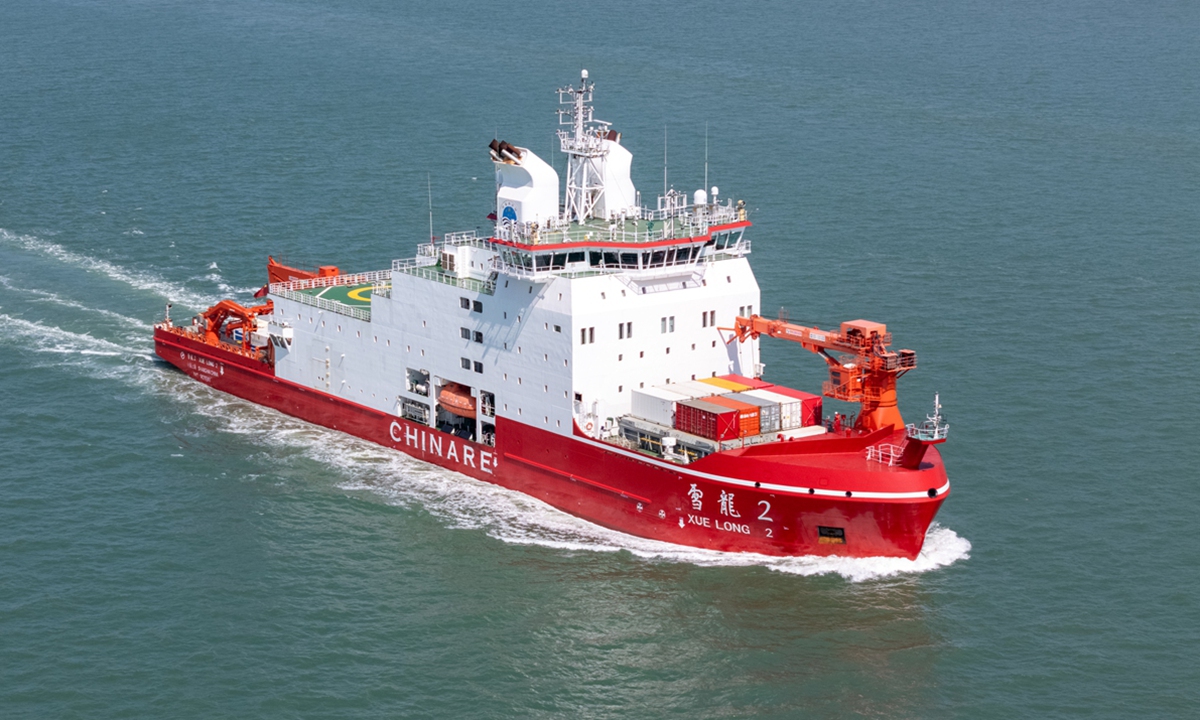
Xuelong 2, one of the ships from China's 41st Antarctic expedition team, departs on a nearly seven-month mission to Antarctica on November 1, 2024 in Guangzhou, South China's Guangdong Province. Photo: VCG
The research icebreaker
Xuelong 2, or Snow Dragon 2, which took part in China's 41st Antarctic expedition, is preparing to begin its return journey. This expedition has achieved breakthroughs in technological innovation, large-scale application of domestically-developed polar equipment, and international cooperation, CCTV News reported on Monday.
The
Xuelong 2, having recently completed its autumn scientific expedition mission in the Southern Ocean, is scheduled to proceed to Australia for resupply and will soon return to China, according to CCTV News.
Commemorating the 40th anniversary of China's polar exploration, the 41st expedition achieved notable breakthroughs in technological innovation, large-scale application of domestically-developed polar equipment, and international cooperation.
Key accomplishments included the building support facilities at China's Qinling Station in Antarctica, which for the first time deployed a multi-energy complementary clean energy system combining wind, solar, hydrogen, and energy storage at Antarctic research stations, said the report.
Additionally, the expedition team conducted overwintering operations at Qinling Station, marking China's first successful overwintering across three Antarctic stations, according to CCTV News.
Currently, 43 team members are undertaking overwintering tasks at Qinling Station, which is scheduled from March to November.
During the winter season, they will continue work on interior finishing of the main station area, equipment debugging, and operational maintenance, said the report. They are scheduled to return during the next Antarctic expedition in 2026.
During the expedition, the team continues to conduct investigation, monitoring, and scientific research, according to China's Ministry of Natural Resources.
Through aerial surveys, they have filled fundamental data gaps in ice sheets stretching from China's Zhongshan Station in Antarctica to Enderby Land region, Grove Mountains, Prince Charles Mountains, and Princess Elizabeth Land region, while achieving milestones such as the first successful collection of long gravity cores in the Amundsen Sea.
Multinational joint cruises in the Ross Sea have also been organized by the expedition team, said the ministry.
These achievements have also accumulated invaluable experience for future large-scale, high-intensity, interdisciplinary, and globally integrated polar research, according to the ministry.
Furthermore, they provide robust support for China and the international community to deepen studies on Antarctica's rapid changes, effectively address global climate challenges, and actively participate in Antarctic governance, the ministry said.
Organized by the Ministry of Natural Resources, the 41st Chinese Antarctic expedition was carried out by three ships, research icebreakers
Xuelong and
Xuelong 2, as well as cargo vessel
Yong Sheng.
The cargo ship
Yong Sheng completed its mission and returned to China on January 23, while China's research icebreaker
Xuelong arrived in Shanghai on April 8.
Global Times




